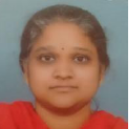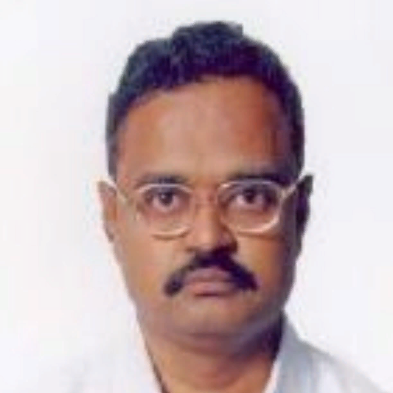International Journal of Image, Graphics and Signal Processing (IJIGSP)
IJIGSP Vol. 16, No. 2, 8 Apr. 2024
Cover page and Table of Contents: PDF (size: 761KB)
Time-varying Comb Filters to Improve Speech Perception in Sensorineural Hearing Loss Subjects
PDF (761KB), PP.58-69
Views: 0 Downloads: 0
Author(s)
Index Terms
Time-varying comb filter, Sensorineural Hearing Loss, Masking, Speech quality, Modified Rhyme Test ( MRT)
Abstract
In the case of Sensorineural Hearing Loss (SNHL) persons speech perception diminishes in a noisy environment because of masking. The present work aims mainly at improving speech perception in sensorineural hearing-impaired subjects, as there is no known medical treatment for this condition. Speech perception can be improved by reducing the impact of masking. This is accomplished by splitting the speech signal into two parts for binaural dichotic presentation using time-varying comb filters having complementary magnitude responses. Using the frequency sampling method time-varying comb (FIR) filters with magnitude responses complementary to each other with 512 order are designed to split the speech signal for dichotic presentation. For the purpose of designing filters, 22 kHz sampling frequency and twenty-two one-third octave bands spanning from 0 to 11 kHz are taken into consideration. Magnitude responses of filters are continuously swept with a time shift less than just noticeable difference (JND) so that capacity to detect gaps in speech signal enhances without negating the benefits of the spectral splitting technique. Filter functioning is evaluated by using objective and subjective measures. Using Perceptual Evaluation of Speech Quality (PESQ) and spectrographic analysis an objective evaluation is made. The subjective measure is done using Mean Opinion Score (MOS) for quality of speech. MOS test is examined on normal hearing subjects by adding white noise to study materials at different SNR levels. For the evaluation of intelligibility of speech Modified Rhyme Test (MRT) is considered and evaluated on normal hearing subjects as well as bilateral moderate SNHL persons by adding white noise to study materials at different SNR levels. Study materials used for the evaluation of quality are VC syllable /aa-b/ & vowel /aa/. 300 monosyllabic words of consonant-vowel-consonant (CVC) are used as study materials for the evaluation of speech intelligibility.
The outcomes showed an improvement in PESQ values and MOS test scores for lower SNR values comparing unprocessed speech with processed speech and also an improvement in the intelligibility of processed speech in a noisy atmosphere for both types of subjects. Thus there is an enhancement in speech perception of processed speech in a noisy environment.
Cite This Paper
Aparna Chilakawad, Pandurangarao N. Kulkarni, "Time-varying Comb Filters to Improve Speech Perception in Sensorineural Hearing Loss Subjects", International Journal of Image, Graphics and Signal Processing(IJIGSP), Vol.16, No.2, pp. 58-69, 2024. DOI:10.5815/ijigsp.2024.02.05
Reference
[1]Brian C. J. Moore, “An Introduction to Psychology of Hearing”. 4th ed. London: Academic, 1997.
[2]Ashwini V.Vikhe, Ulhas V. Patil, “Improving Speech intelligibility of sensorineural hearing impaired and real time noise cancellation using filters”, International journal of informative and Futuristic Research. Vol 3 Issue 10 June 2016 ISSD: 2347-1697.
[3]Kambalimath, Shankarayya G., Prem C. Pandey, Pandurangarao N. Kulkarni, Shivaling S. Mahant-Shetti, and Sangamesh G. Hiremath. "FPGA-based implementation of comb filters using sequential multiply-accumulate operations for use in binaural hearing aids." In 2014 Annual IEEE India Conference (INDICON), pp. 1-6. IEEE, 2014.
[4]Cheeran, Alice N., Prem C. Pandey, and Dakshayani S. Jangamashetti. "Design of comb filters based on auditory filter bandwidths for binaural dichotic presentation for persons with sensorineural hearing impairment." In 2002 14th International Conference on Digital Signal Processing Proceedings. DSP 2002 (Cat. No. 02TH8628), vol. 2, pp. 971-974. IEEE, 2002.
[5]Jangamashetti, Dakshayani S., Prem C. Pandey, and Alice N. Cheeran. "Time varying comb filters to reduce spectral and temporal masking in sensorineural hearing impairment." In Bio vision 2001 International conference on Biomedical Engineering, Bangalore, India, pp. 21-24. 2001.
[6]Kulkarni, P. N., and P. C. Pandey. "Optimizing the comb filters for spectral splitting of speech to reduce the effect of spectral masking." In 2008 International Conference on Signal Processing, Communications and Networking, pp. 69-73. IEEE, 2008.
[7]Pujar, Rajani S., and P. N. Kulkarni. "Frequency compression of speech for improving speech perception in sensorineural hearing loss: FBS approach." In 2017 International Conference on Wireless Communications, Signal Processing and Networking (WiSPNET), pp. 487-492. IEEE, 2017.
[8]ITU-T, “Perceptual evaluation of speech quality (PESQ): an objective method for end to end speech quality assessment of narrow band telephone networks and speech codecs,” ITU-T Rec., P.862, 2001.
[9]Cheeran, Alice N., and Prem C. Pandey. "Optimizing the sweep cycle of time-varying comb filters for binaural dichotic presentation in sensorineural hearing impairment." In 2002 14th International Conference on Digital Signal Processing Proceedings. DSP 2002 (Cat. No. 02TH8628), vol. 2, pp. 1145-1148. IEEE, 2002.
[10]Wang, Qingyun, Ruiyu Liang, Li Jing, Cairong Zou, and Li Zhao. "Sub-band noise reduction in multi-channel digital hearing aid." IEICE TRANSACTIONS on Information and Systems 99, no. 1 (2016): 292-295.
[11]Cheeran, Alice N., and Prem C. Pandey. "Speech processing for hearing aids for moderate bilateral sensorineural hearing loss." In 2004 IEEE International Conference on Acoustics, Speech, and Signal Processing, vol. 4, pp. iv-17. IEEE, 2004.
[12]Kulkarni, Pandurangarao N., Prem C. Pandey, and Dakshayani S. Jangamashetti. "Binaural dichotic presentation to reduce the effects of spectral masking in moderate bilateral sensorineural hearing loss." International journal of audiology 51, no. 4 (2012): 334-344.
[13]Sang, Jinqiu, Hongmei Hu, Guoping Li, Mark E. Lutman, and Stefan Bleeck. "Supervised sparse coding strategy in hearing aids." In 2011 IEEE 13th International Conference on Communication Technology, pp. 827-832. IEEE, 2011.
[14]Kulkarni, Pandurangarao N., Prem C. Pandey, and Dakshayani S. Jangamashetti. "Study of perceptual balance for designing comb filters for binaural dichotic presentation." Proc. 20th Int. Cong. Acoust.(ICA 2010, Sydney, Australia, 23-27 Aug. 2010), Paper 556 (2010).
[15]ARIÖZ, UMUT, and BANU GÜNEL. "Evaluation of hearing loss simulation using a speech intelligibility index." Turkish Journal of Electrical Engineering and Computer Sciences 24, no. 5 (2016): 4193-4207.
[16]Deshmukh, S. G., S. A. Pangaonkar, and M. K. Datir. "Effective Filter Design Using FDA Tool for Improving Speech Intelligibility of Hearing Impaired." International Journal of Information and Computation Technology 4, no. 4 (2014): 419-424.
[17]Kulkarni, Pandurangarao N., Prem C. Pandey, and Dakshayani S. Jangamashetti. "Multi-band frequency compression for reducing the effects of spectral masking." International Journal of Speech Technology 10 (2007): 219-227.
[18]Kulkarni, Pandurangarao N., Prem C. Pandey, and Dakshayani S. Jangamashetti. "Multi-band frequency compression for improving speech perception by listeners with moderate sensorineural hearing loss." Speech Communication 54, no. 3 (2012): 341-350.
[19]Pujar, Rajani S., and P. N. Kulkarni. "Cascaded structure of noise reduction and multiband frequency compression of speech signal to improve speech perception for monaural hearing aids." In 2019 IEEE 16th India Council International Conference (INDICON), pp. 1-4. IEEE, 2019.
[20]J.G.Proakis and D.G.Manolakis, “Digital Signal Processing Principles, Algorithm, And Applications.” New Delhi: Prentice Hall, 1997.
[21]David Thompson, Railway Noise and Vibration Mechanisms, Modelling and Means of Control :Elsevier,2010
[22]Beerends, John G., Andries P. Hekstra, Antony W. Rix, and Michael P. Hollier. "Perceptual evaluation of speech quality (pesq) the new itu standard for end-to-end speech quality assessment part ii: psychoacoustic model." Journal of the Audio Engineering Society 50, no. 10 (2002): 765-778.
[23]Rix, Antony W., John G. Beerends, Michael P. Hollier, and Andries P. Hekstra. "Perceptual evaluation of speech quality (PESQ)-a new method for speech quality assessment of telephone networks and codecs." In 2001 IEEE international conference on acoustics, speech, and signal processing. Proceedings (Cat. No. 01CH37221), vol. 2, pp. 749-752. IEEE, 2001.
[24]ITU, T. "Recommendation P. 800. Methods for subjective determination of transmission quality." International Telecommunication Union Geneva, Switzerland, August 1996.

